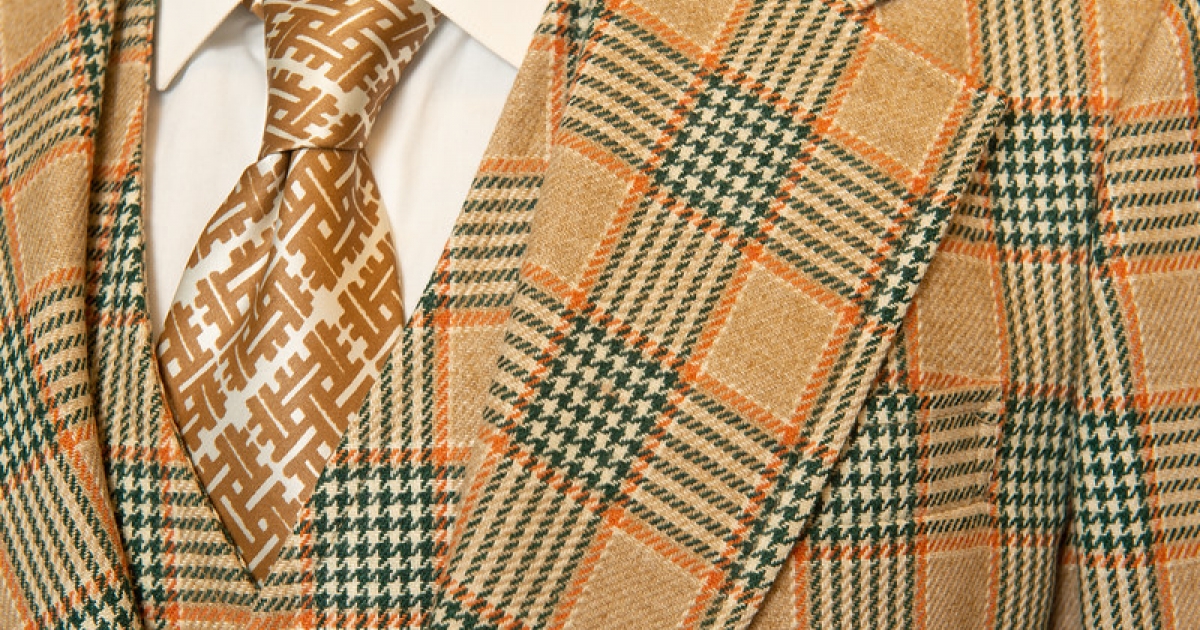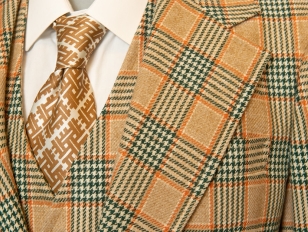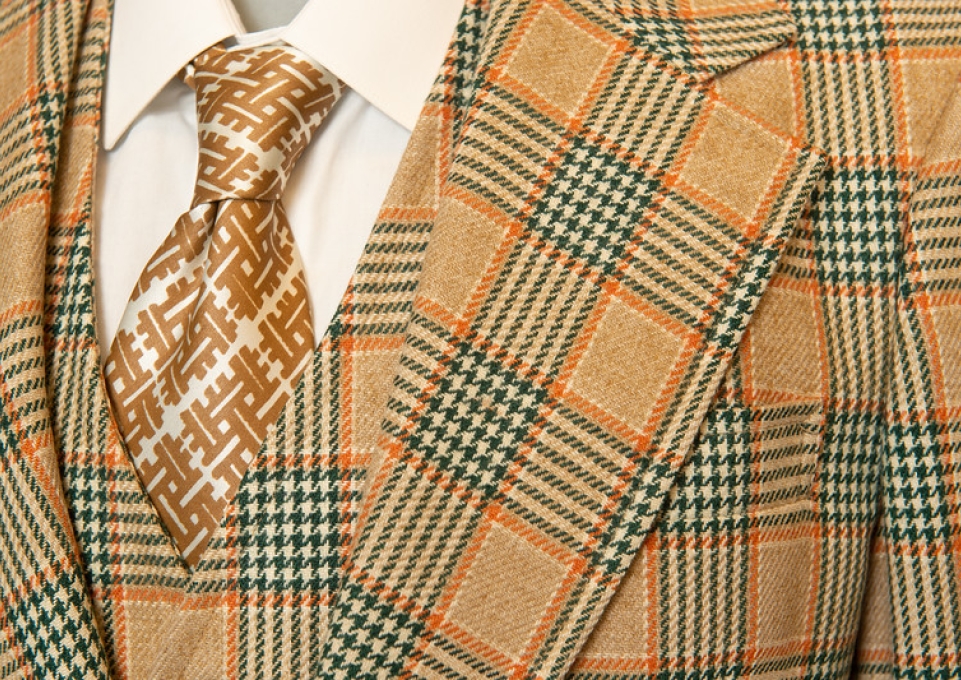
If you stop by the exhibit Vibrant Patterns and Prints: Cotton Endures in the 1960s and 1970s, located on the third floor of the Technology Building, you can almost hear the rock and disco beats, see women making strides in society, and feel the buzz of protest in the air.
Created by Arlesa Shephard, Buffalo State College associate professor in the Fashion and Textile Technology (FTT) Department, and Shayna Diamond, graduate student in the museum studies program, Vibrant Patterns and Prints is a collection of clothing reflecting the individuality, European influences, pop and op art, and multiple social movements that defined the era.
The exhibit is on view Monday through Friday from 9:00 a.m. to 5:00 p.m. through mid-October.
Shephard oversees the department’s Historic Costume and Textile Collection, which includes more than 1,500 garments going back as far as the mid-nineteenth century.
“Our department recently received a generous grant from Cotton Inc., and I wanted to showcase the changing uses of cotton during this time period,” said Shephard, who decided to integrate the exhibit into the History of Costume course she taught last spring, adding, “Shayna was really integral in pulling the exhibit together and creating the final vision.”
After hearing Shephard speak to one of her classes, Diamond asked if she could intern with Shephard this summer.
“I’ve absolutely no fashion sense or knowledge whatsoever, but I have hobbyist seamstresses in my family, so I was looking forward to learning some of the terminology and techniques through working with the collection,” said Diamond, who has previously worked on several exhibits in museums, public exhibitions, and private collections. “Every step of the process was simultaneously familiar and unique.”
“I think the students were really drawn to this era, because some of these fashions are coming back into style and because it was so vibrant and full of change.”
— Arlesa Shephard, Ph.D., Associate Professor, Fashion and Textile Technology
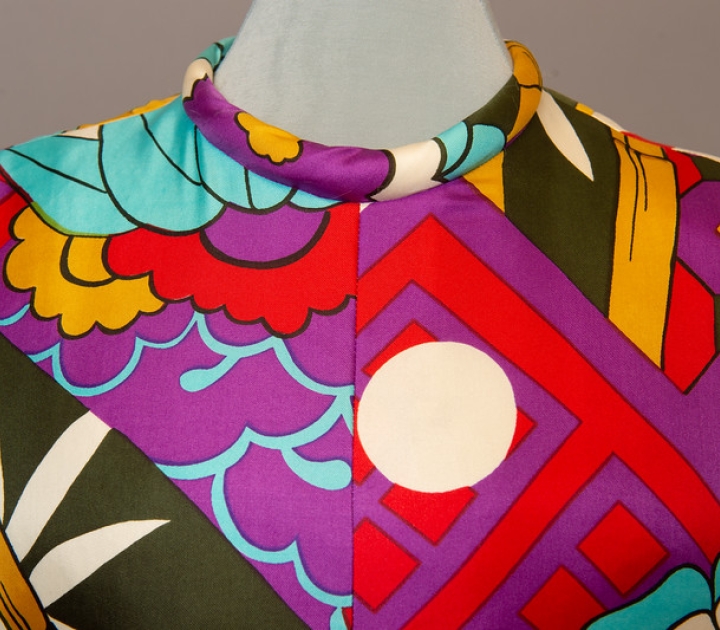
Because instruction was remote last spring, Shephard’s students couldn’t physically work on the exhibit; however, they did select the theme and specific garments to include. They also completed research and discovered the synchronicity that occurred between fashion and society in the ’60s and ’70s.
“I think the students were really drawn to this era,” Shephard said, “because some of these fashions are coming back into style and because it was so vibrant and full of change.”
This change-filled era resulted not only in lively prints and bold colors but also in new fibers and designs.
“Although synthetic fibers, such as polyester, had exploded in the textile market and were valued for their resistance to wrinkles, consumers quickly realized the value of cotton’s breathability and comfort,” Shephard said. “Thus, cotton blends were promoted as the best of both worlds, offering garments that were both comfortable and easy to care for.”
Shephard and Diamond divided the exhibit into sections with accompanying vignettes that explain the array of styles. For instance, “Woman on the Go” features a cotton sateen dress with a geometric optical art pattern and wrinkle-resistance finish that spoke to the need to jettison the iron when women began working outside the home. Also, in this group is Vera Maxwell’s 1970s “Speed Suit,” a dress strategically designed without the typical back zipper closure. A woman could simply pull the dress over her head and look stylish.
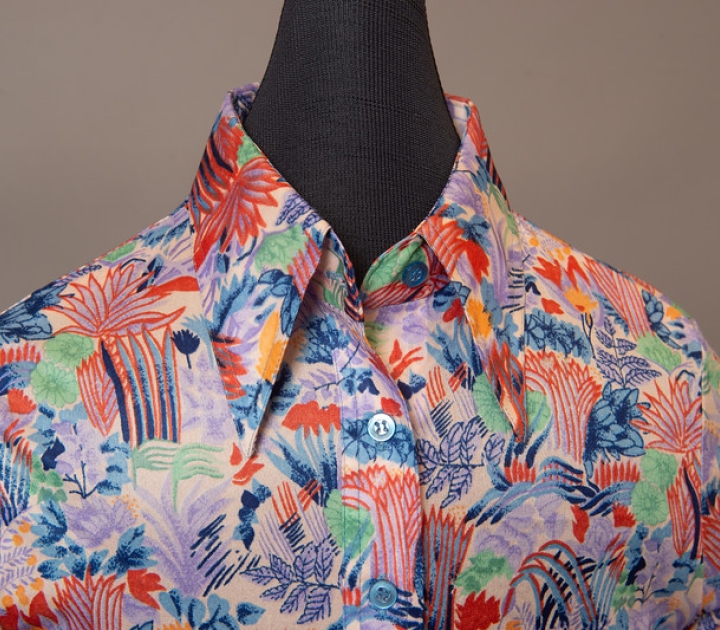
“There’s a hidden depth to the collection—stories of family and culture, struggle and prosperity—behind every stitch, fold, and weave.”
— Shayna Diamond, Graduate Student, Museum Studies Program
Meanwhile, the “Romantic Nostalgia” section features prairie-style dresses inspired by nostalgic 1970s television shows such as Little House on the Prairie. And “Pants for Everyone” includes a Pauline Trigère jacket paired with a snakeskin print polyester blouse and black pants that signal the beginning of women wearing pants to offices and restaurants. This section also reflects the growing popularity of blue jeans.
“Previously, people might have worn jeans to work in the yard, but they weren’t part of the fashion sphere,” Shephard said. “We paired them with a Huk-a-Poo polyester knit shirt in a vibrant print and that fits close to the body. This ensemble gave men a simple everyday look, which was easy to care for as well as fashionable and eye-catching.”
Diamond said she particularly enjoyed working with the textiles themselves, which are lavishly draped across stands throughout the exhibition.
“The patchwork background was truly a labor of love, and I’m thrilled that Dr. Shephard was willing to run with the concept,” Diamond said. “The textiles are international and demonstrate some of the multicultural aspects of the collection.”
Having the opportunity to exhibit a sliver of the richly varied historic costume collection was exciting, Shephard said. It also provided a way to connect with students, despite the distance created by the pandemic.
“They participated in the process,” she said. “They got a better understanding of how these fashions reflected the many things happening throughout the country in the ’60s and ’70s.”
Diamond said creating this exhibit was an experience like none other.
“I loved every minute of it,” she said. “There’s a hidden depth to the collection—stories of family and culture, struggle and prosperity—behind every stitch, fold, and weave. It blew me away.”
Photos by Bruce Fox, campus photographer.
